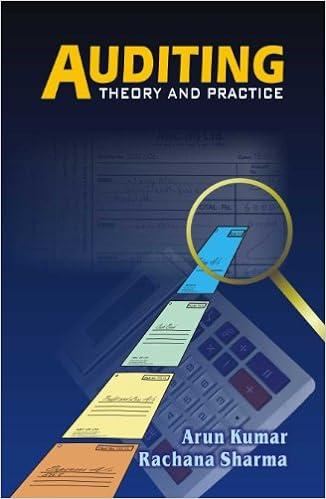Answered step by step
Verified Expert Solution
Question
1 Approved Answer
please give detailed information The transportation problem assumes that direct routes exist from each source to each destination. However, there are situations in which units

please give detailed information
The transportation problem assumes that direct routes exist from each source to each destination. However, there are situations in which units may be shipped from one source to another or to other destinations before reaching their final destination. This is called a trans-shipment problem. For example, movement of material involving two different modes of transport-road and railways or between stations connected by broad gauge and metre gauge lines will necessarily require trans-shipment. For the purpose of trans-shipment the distinction between a source and destination is dropped so that a transportation problem with m sources and n destinations gives rise to a trans-shipment problem with m + n sources and m + n destinations. The basic feasible solution to such a problem will involve [(m + n) + (m + n)-1] or 2m + 2n - 1 basic variables and if we omit the variables appearing in the (m + n) diagonal cells, we are left with m + n-1 basic variables In the trans-shipment problem, as each source or destination is a potential point of supply as well as demand, the total supply, say of N units, is added to the actual supply of each source, as well as to the actual demand at each destination. Also the demand' at each source and supply at each destination are set equal to N. Therefore, we may assume the supply and demand of each location to be fictitious one. These quantities (N) may be regarded as buffer stocks and each of these buffer stocks should at least be equal to the total supply/demand in the given problem. The given trans-shipment problem can, therefore, be regarded as the extended transportation problem and can hence be solved by the transportation technique. In the final solution, units transported from a point to itself t.e., in diagonal cells are ignored as they do not have any physical meaning as there is no transportation involved. f37 EXAMPLE 3.10-1 A firm has two factories X and Y and three retail stores A, B and C. The number of units of a product available at factories X and Y are 200 and 300 respectively, while demanded at retail stores are 100, 150 and 250 respectively. Rather than shipping directly from sources to destinations, it is decided to investigate the possibility of trans-shipment. Find the optimal shipping schedule. The transportation costs in rupees per unit are given below. TABLE 3.217 Factory Retail store Y 0 6 7 8 Factory X X 9 } 6 0 5 4 3 4 7 0 5 1 Refail store 6 1 5 1 0 4 8 9 7 6 0Step by Step Solution
There are 3 Steps involved in it
Step: 1

Get Instant Access to Expert-Tailored Solutions
See step-by-step solutions with expert insights and AI powered tools for academic success
Step: 2

Step: 3

Ace Your Homework with AI
Get the answers you need in no time with our AI-driven, step-by-step assistance
Get Started


